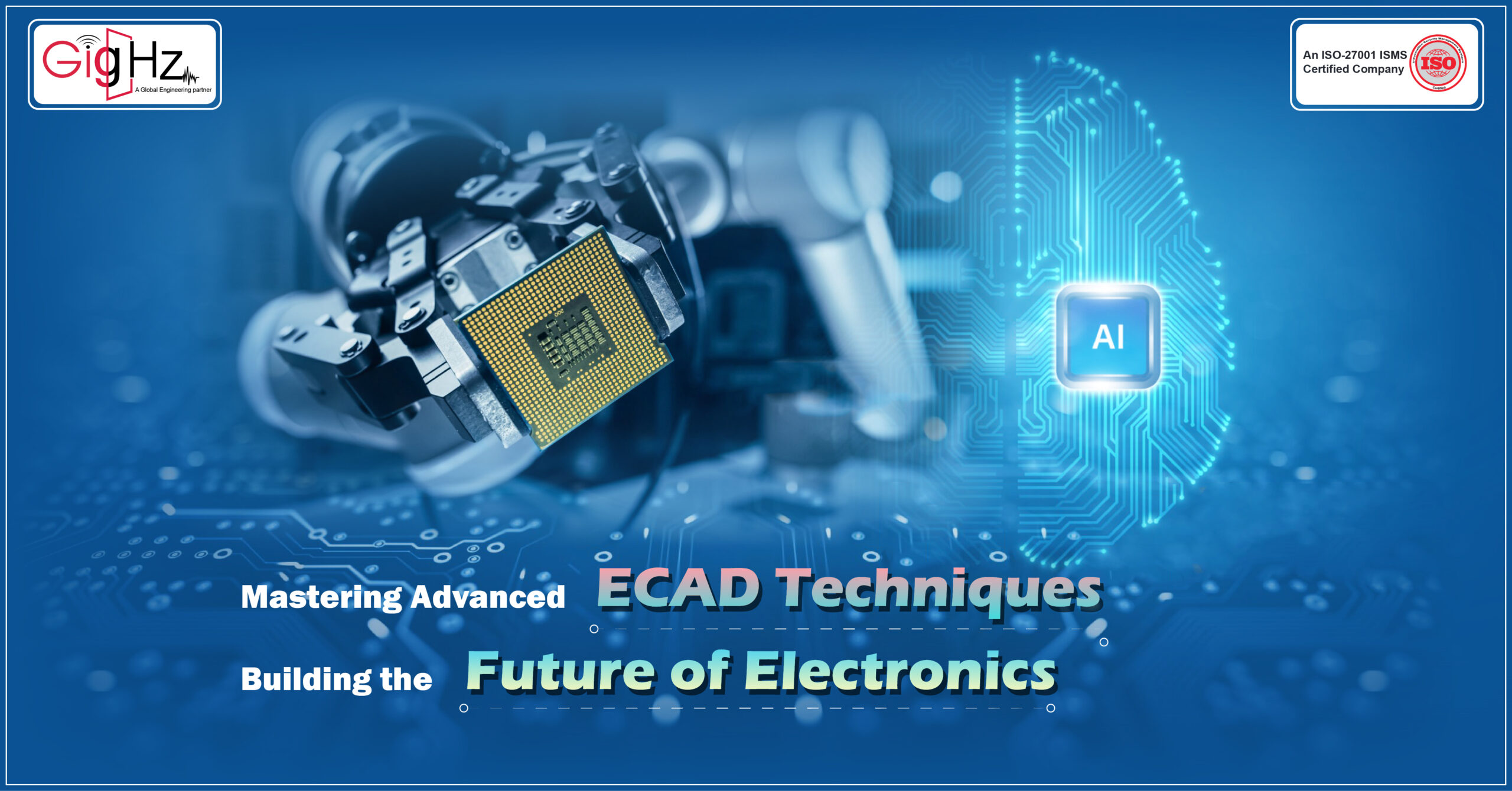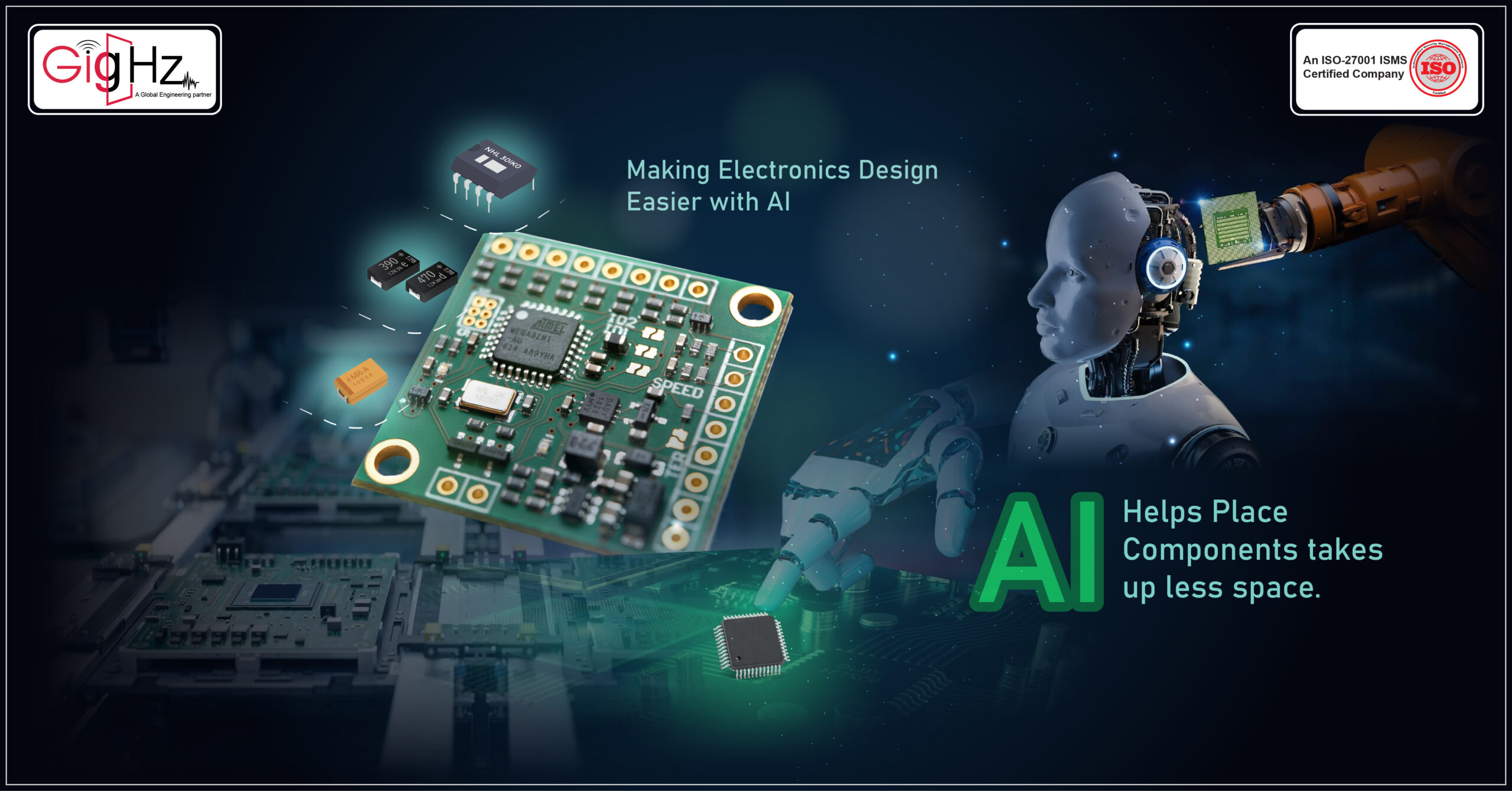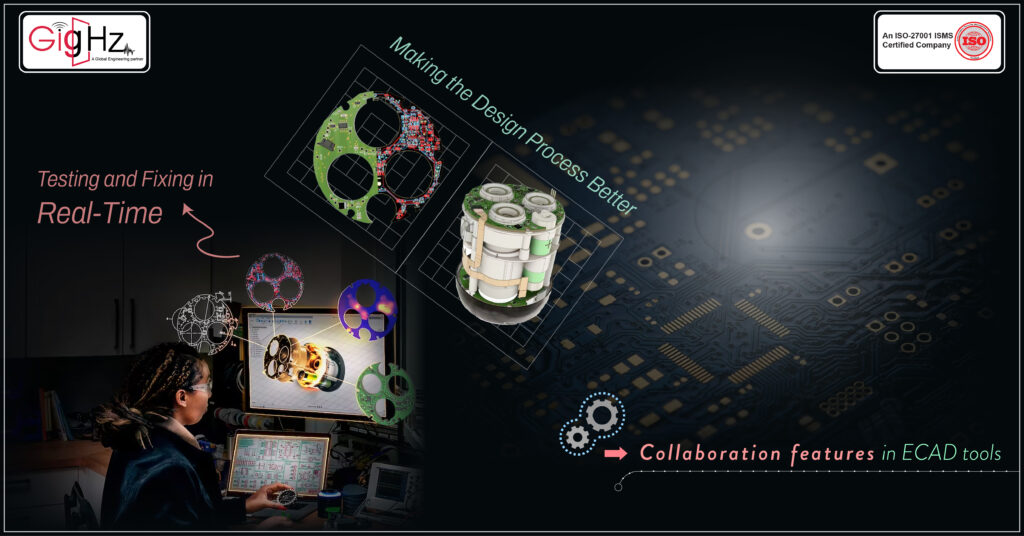Mastering Advanced ECAD Techniques
Welcome to the world of electronic and mechanical design, where innovation never stops. Learning ECAD techniques is fundamental for modern electronic design. Electronic Computer-Aided Design (ECAD) is a powerful tool that helps engineers create electronic systems more efficiently. Today, we’ll explore how Advanced ECAD Techniques are shaping the future of electronics. In this blog, we’ll talk about how artificial intelligence, automation, and other tools are making electronics design easier.


Category :
Published Date :
December 4, 2023
Category :
Published Date :
December 4, 2023
Category :
Published Date :
December 4, 2023
We’ll also discuss how ECAD helps make smaller and more environmentally friendly electronic devices, ensuring they meet the high standards of reliability and performance that users expect.
- The Power of AI and Automation
- Optimizing the PCB Design Process
- Pushing the Boundaries of Miniaturization
- Sustainability and Green Electronics
- Outsourcing ECAD: Pros and Considerations
The Power of AI and Automation

ECAD tools now use artificial intelligence (AI) to help engineers. They can place components and draw lines automatically, which saves time and makes designs better.
AI Helps Place Components
Understanding ECAD techniques is crucial for efficient circuitry development. AI helps engineers put electronic parts in the right places on a printed circuit board. This makes sure everything works well and takes up less space.
For example, it can suggest where to put a resistor or a capacitor to optimize the design flow.
Automation Makes Routing Easier
Automation also makes it easier to connect parts with wires. ECAD tools can do this automatically, making sure everything works as it should. This reduces the chances of errors and ensures that signals flow smoothly between components.
Optimizing the PCB Design Process

ECAD tools do more than just automation. They also help make the whole process better. Engineers can work together on designs, and they can test and fix problems in real time.
Engineers Can Work Together
Engineers use ECAD techniques to streamline PCB design processes. Now, engineers can work together on designs at the same time. This means they can make things faster and better. Collaboration features in ECAD tools allow team members to share ideas and make collective decisions for optimal designs.
Testing and Fixing in Real-Time
Engineers can also test their designs as they make them. This helps find and fix problems for early fault detection, which is faster and cheaper.
Real-time simulation and analysis design tools in ECAD allow for immediate feedback and adjustments, ensuring circuit designs meet performance requirements.
Pushing the Boundaries of Miniaturization
Making Things Smaller and Smarter
People want electronics to be smaller but still work well. ECAD helps engineers make very small parts that do big jobs.
Making Things Smaller with HDI
CAD tools help make small things with High-Density Interconnects (HDI). This means more parts can fit in small spaces, allowing for the creation of compact yet powerful electronic devices.
Using Better Materials
Engineers also use good materials to make small parts. This helps make things smaller but still strong. Advanced materials and manufacturing techniques in ECAD contribute to the durability and reliability of miniaturized components
Sustainability and Green Electronics

ECAD is also making electronics better for the environment. Engineers use it to make things that use less power and are better for the Earth.
Better for Manufacturing and Assembly
ECAD helps engineers make things that are easy to build. This means less waste and less energy used during the manufacturing and assembly processes. Designing for manufacturing efficiency is a key aspect of ECAD.
Using Less Energy
ECAD techniques enable precise schematic representation in electronic designs. ECAD also helps make electronics that use less energy. This is good for the environment and saves money in the long run. By optimizing power distribution and reducing standby power consumption, ECAD contributes to energy-efficient designs.
Outsourcing ECAD: Pros and Considerations

In the realm of Advanced ECAD Techniques, outsourcing has emerged as a viable option for many organizations looking to leverage specialized expertise, reduce costs, and accelerate project timelines. However, outsourcing also comes with its unique set of advantages and considerations that warrant careful examination.
The Benefits of Outsourcing ECAD
ECAD techniques facilitate the creation of intricate electronic designs. Outsourcing ECAD services can provide access to a pool of skilled professionals with deep expertise in electronic design and ECAD tools. This can lead to faster project completion, cost savings, and the ability to tap into specialized knowledge that may not be available in-house.
Potential Challenges and Risks
While outsourcing offers advantages, it’s essential to be aware of potential challenges. These may include communication issues, intellectual property concerns, and the need for effective project management. Understanding and mitigating these risks is crucial for a successful outsourcing partnership.
Selecting the Right Outsourcing Partner
Choosing the right outsourcing partner is critical to reaping the benefits of outsourcing ECAD services. Factors such as the partner’s track record, experience, communication skills, and data security measures should be carefully evaluated to ensure alignment with project goals and quality standards.
Conclusion
GigHz ECAD techniques encompass various tools to enhance electronic design workflows. Advanced ECAD and MCAD software and techniques are changing the world of electronics. AI and automation make design easier, and optimization tools make the whole process better. Engineers are also making electronics smaller and more environmentally friendly, meeting the growing demand for sustainable and compact electronic devices.
If you want to know more about how we can help with Advanced ECAD Techniques, visit our Services Page at www.gighz.net
We can work together to create electronics that are smarter, smaller, and greener, shaping a better future for us all and ensuring that your electronic systems exceed the highest standards of reliability and performance.
Engineers are also making electronics smaller and more environmentally friendly, meeting the growing demand for sustainable and compact electronic devices.
If you want to know more about how we can help with Advanced ECAD Techniques, visit our Services Page at www.gighz.net
We can work together to create electronics that are smarter, smaller, and greener, shaping a better future for us all and ensuring that your electronic systems exceed the highest standards of reliability and performance.


